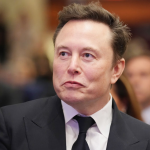Insider
- EV uptake is expected to increase from around 250,000 new cars per year to 8 to 9 million by 2030.
- Policymakers need to ensure charging infrastructure matches pace with consumer demand.
- This conversation was part of Insider’s virtual event “The Future of Mobility: Data Driving Innovation,” presented by Arity on Tuesday, September 14.
- Click here to watch a recording of the full event.
Multiple factors are accelerating the transportation industry’s green transformation – but experts argue it’s policymakers’ job to ensure no one’s left behind.
“We’re going through a revolution in our transportation sector, and we have to do it urgently because of climate change,” Alvaro Sanchez, VP of policy at The Greenlining Institute, said during Insider’s recent virtual event “The Future of Mobility: Data Driving Innovation,” presented by Arity.
“Particularly here in the US, communities of color have been left behind, and those communities have been locked in with poverty and pollution,” Sanchez added. “So as we move forward and we are bringing in a more sustainable, cleaner form of mobility, we want to make sure that we don’t repeat those mistakes of the past.”
This conversation, titled “Transportation and sustainability: How data is enabling a greener future,” also featured Alyssa Muto, director of sustainability and mobility for the City of San Diego and Aditya Jairaj, director of EV marketing and sales at Nissan.
“We have to speed up everything – our adoption of electric vehicles, our policies, our citizen mobilization, to demand that these things happen in our communities. And we’re just getting started,” Sanchez said.
Muto noted that over half of California’s mobile source emissions come from just four cities. Helping residents move toward other options like public transit, walking, and biking is important for lowering emissions, but so is supporting electric vehicles.
“As we see incentive-based programs at the state and federal level for increasing ownership, the charging component is going to be really critical,” she said.
Jairaj pointed out that electric vehicle (EV) industry sales are currently around 3 to 4% of the total market, but those figures are expected to increase to around 40 to 50% by 2030.
“That’s a huge shift, so 250,000 to 8 million [cars] in nine years,” he said. “We’ve got investments in this space – capital markets are spending a lot of money in mobility and EVs.”
Sanchez said that charging infrastructure becomes a policy issue as we consider how existing buildings can be retrofitted without displacing tenants or increasing affordability burdens.
“Policy becomes a really important tool to be thinking about how to deploy these vehicles in a way that’s more equitable for everyone,” he said.
Sanchez pointed to three critical policies in California helping push the transition: the clean trucks rule, where 75% of pickups have to be electric by 2045, the governor’s executive order banning the sale of internal combustion engines by 2035, and a rule that would require the purchase of fleets to be 100% electric by 2035.
“I think the combination of policy and consumer demand is what’s going to drive the adoption of the technology – but we have to be really mindful that the market on its own won’t address the inequities that exist currently in our society,” he said.
Powered by WPeMatico






